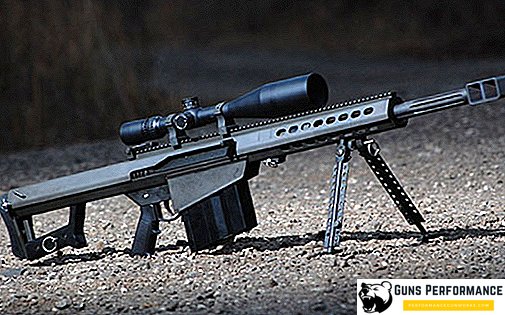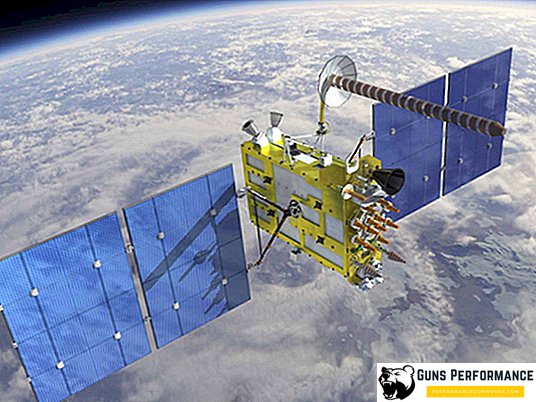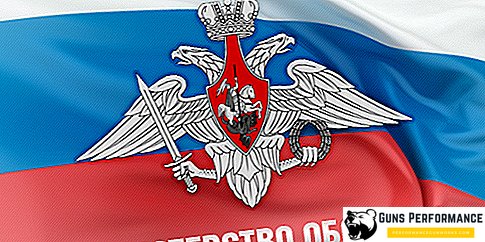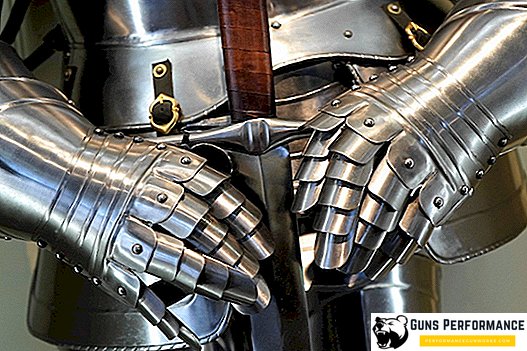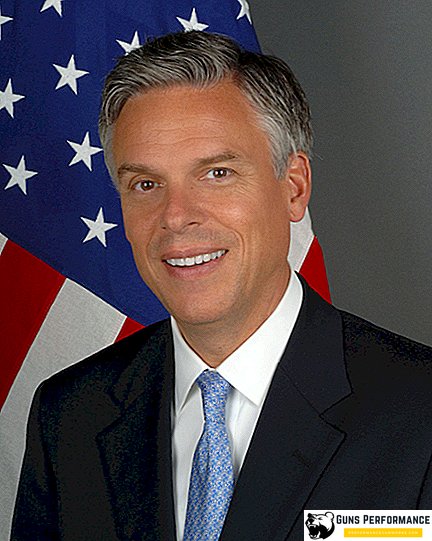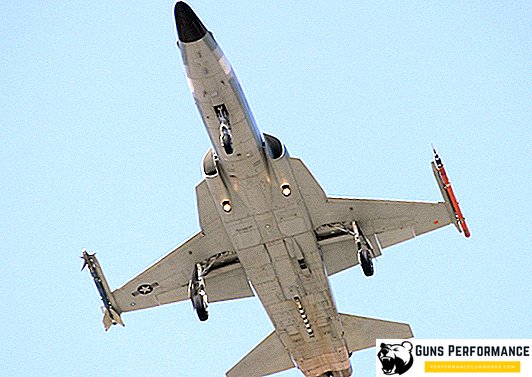High-quality military clothing is a pledge of high combat capability of the army. Modern Russian military uniform meets all requirements: it is comfortable, reliable and functional. A new military uniform was released in our country in 2018, and now every soldier of the armed forces is equipped with it.
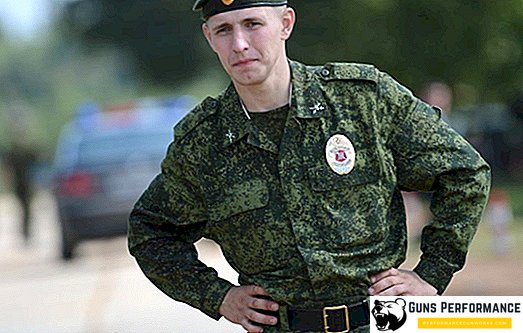
Military uniforms are divided into three main types:
- Parade - used during ceremonies (at parades, on military days, at ceremonies for receiving military awards, etc.);
- Field - used during hostilities, service, providing assistance to civilians during natural disasters, etc .;
- Office - used in cases not related to the first two categories.
Global reform of the form of the Russian army
The modern history of Russia has several unsuccessful attempts to change the uniform of military personnel. While in our country huge money was spent on unsuccessful experiments, in the US Army military clothing became more convenient, its operational characteristics increased, innovative materials were used in the production of clothing.
Modern military uniforms began their journey in 2007 when Anatoly Serdyukov held the post of Minister of Defense. It was then that a large-scale competition of sketches was organized, in which thousands of designers from all over the country took part. The Ministry of Defense awarded the victory to the famous designer Valentin Yudashkin.

The next two years, the specialists were engaged in the development of the final versions of the new military uniform, designed to further equip the Russian army. The result was a set of clothes, in many respects similar to the American uniform. The developers disagreed with such an opinion, although many factors spoke precisely in favor of this comparison.
Winter uniform was particularly discontent. She did not protect the soldiers from the cold. For this reason, the Ministry of Defense received every day a lot of complaints about the inadequate quality of the winter set. This led to an outbreak of colds among the military. There were also claims to the appearance of the uniform: some stylistic decisions were copied from sets of other countries. The stumbling block was the quality of the fabric and thread: the new military clothing quickly fell into disrepair.

Negative reviews, dissatisfaction of soldiers and army specialists made the Ministry of Defense think about changing equipment. The decision to base American clothes was wrong, such costumes did not fit the conditions of our country. A new set of uniforms, developed later, consisted of 19 parts. The approximate cost of one set is 35 thousand rubles. The ceremonial version of special changes was not tolerated, since it is the field uniform that is of particular importance.
New field military uniform
The first change that was conspicuous was a change in the location of shoulder straps on a uniform. In 2010, the "NATO" option was proposed, shoulder straps in it were located on the "belly". Many servicemen did not like it, since they "got used to see shoulder straps on their shoulders." Chevrons on the form are located on both sleeves. The addition was the appearance of fitted overcoats, quickly fixed elements of clothing with velcro. For the first time in history, Russian officers received warm sweaters. Completely replace footcloths and boots failed.

Valentin Yudashkin was blamed for the failed project of a new military suit. In 2012, he spoke to reporters and stated that the clothes used in use are very different from his version. In particular, to reduce the cost of materials were replaced by less quality. The journalists came to the conclusion that only the appearance remained from the version of the designer.
Military uniforms of the new generation were developed on the basis of feedback from thousands of soldiers from all over the country. The form of the sun has become multi-layered. This allows each soldier to independently choose the necessary elements of clothing, guided by the goals and objectives set for him, as well as the weather conditions.

The modified set of VKPO includes a basic costume, several types of jackets, boots for different seasons and much more, including a balaclava, a synthetic belt and high-quality socks. Tailoring of military uniforms is carried out from blended fabric, which includes 65% of cotton, and 35% of polymeric materials.
The Russian military clothing of the new model was in every soldier at the end of 2018, as previously planned by the Ministry of Defense. Equipment change took place in three stages. In 2013, 100 thousand new sets were issued, in 2014 - 400 thousand and in 2018 - 500 thousand. Over 3 years, a million soldiers were provided.

Particularly noteworthy is the complete abandonment of the footcloths. Modern military uniforms include 12 pairs of socks for one soldier, which he uses throughout the year. In the near future it is planned to increase the number of pairs per military to 24 pieces.
VKPO kits for wearing at different atmospheric temperatures
The military uniform of the new model is presented in two sets:
- Basic outfit for wearing at temperatures above +15 degrees Celsius;
- Multi-layer system for wearing at temperatures from +15 to -40 degrees Celsius.
In winter, soldiers wear lightweight or fleece underwear sets. They are selected depending on the air temperature. In particularly cold areas, both sets of underwear can be put on one over the other.

For equipment in the summer period, pants, jacket, beret and boots are used. The surface of the garment is carefully treated with an innovative solution that repels moisture. It allows clothes to remain in the rain dry for up to two hours. To protect against mechanical stress, military clothing is equipped with reinforcing elements. Such kits are used in parts with a high degree of load.
The rules for wearing military uniforms make it possible to use a fleece jacket in the autumn season: excellent thermal insulation is ensured by the pile, with which it is covered on both sides. The windbreaker, which is worn with trousers of the fifth layer, protects from strong winds.

For the autumn period is designed demi-season military suit. The material from which it is produced, provides reliable protection from the wind, a good degree of vapor permeability and dries quickly after getting wet. During heavy rains it is permissible to use a wind protection kit. The membrane and reliable gluing of layers provide reliable protection against moisture.
In winter, a warmed jacket and vest are worn, which protect against moisture and wind. Despite the high degree of protection against frost, they are light and practical. For very low temperatures, a warm hat and a balaclava are provided.

Modern parade military uniform of the Armed Forces
The basis of dress design has not changed for many years, as it still meets modern requirements and at the same time pays tribute to history. Only a few elements have been replaced in recent years due to their obsolescence. The parade uniform is worn at parades, holidays, when receiving military awards, etc.
In the Russian army there are three approaches to the formation of such a set of uniforms:
- Traditional. Clothing sets include items created in the 19th century. A good example is the ceremonial set of the Presidential Regiment of the Russian Federation - their costumes are identical to the form of the Imperial Guard, adopted in 1907;
- Modern. Fit the dress form corresponds to the daily set, can be used the same color. For example, in the Armed Forces of the Russian Federation, the color of the dress jacket coincides with the everyday color. Everyday elements are complemented by parade elements;
- Universal. The color of the dress may coincide with the everyday, but the colors of the dress elements must differ in a mandatory manner.



The uniform in strict order must meet the following standards:
- The stylist of a military uniform of military men of the Russian Army should be observed;
- Military outfits should be strict and elegant;
- In the production must use only quality materials.
Changes in the design of the dress form are rarely made, its main stylist is determined by history. Every year various additional elements may change. The change of materials used in production is permissible only if it improves the quality and performance of the costume.

Deserves the attention of general dress parade. It is also similar to a casual suit, but has a difference in color design. The color of the ceremonial uniform is gray, it is worn together with bluish trousers and black boots. Stripes on the collar and cuffs.
Casual uniform of military personnel
The color of the everyday form depends on the title and affiliation. Military clothing of the Russian army of everyday type in the generals and officers of olive color, in the Air Force - blue. Caps match the color of equipment. The basis of the color was taken form 1988 sample. The decorative elements on the caps are colored gold. Winter clothes for men have not changed since the last reform.
Girls in uniform can now feel comfortable. Dresses and skirts comfortably fit the body, emphasizing feminine beauty. Women's military clothing - olive or blue. In winter, a shortened, fitted coat is used. Female sergeants and privates wear an olive uniform. In the warm season, head should be on top, in the winter - astrakhan beret, introduced by the last reform.

Sergeants, soldiers and cadets of everyday form are deprived due to uselessness. As an alternative, they are encouraged to wear winter or summer field gear.
The military uniform of this type in the winter period of the year provides for a military coat a gray coat (for the Air Force and the Airborne Forces, blue). For the autumn period, a demi-season blue jacket is provided; for rains, in the summer season - an extended raincoat that does not let moisture through. Black coloring at additional elements of clothes (belt, boots and socks).
Modern office uniform of the Russian army
This set of clothes is a variety of everyday, used by generals, officers and officers of the Ministry of Defense of certain officials. A military suit of this type resembles casual clothes MOE. Included is:
- Soft cap. All military units - green, airborne units was left blue beret;
- Shirt color cap with long or short sleeves (the choice depends on the weather). The shoulder straps can be attached with velcro straps, the tie is not applicable;
- White T-shirt (worn under the shirt);
- Pants color caps and shirts straight cut.
In the colder time of year with the office uniform is allowed to use a warm jacket. It is possible to additionally attach the hood. Cap can be replaced by a warm hat with earflaps. Velcro shoulder straps are attached to the shoulders of the suit.

Every year the office form is subject to minor changes. These include the introduction and abolition of various sewing costumes, changing the shape of insignia, etc. It is forbidden to use an office suit as a field suit. Care and wearing of uniforms
The rules of wearing military uniforms are regulated by order 1500 - the suit must always be clean. To remain so, you need to know about some of the intricacies of caring for him. Improper washing or drying can ruin the appearance, which will entail office trouble. Before cleaning clothes you need to read the information on its label.
Woolen clothes are recommended to be washed by hand in warm water. If this is not possible, then you can use the washing machine, but the washing mode should be the most gentle. Military clothing sizes may become smaller if the wash is performed with hot water. Squeezing wool is prohibited.
Casual military equipment is less whimsical in care. It can be washed in a washing machine in any mode with any washing powder. In addition, a casual suit can withstand water of any temperature.

It is not recommended to clean the beautiful dress uniform at home. It is better to entrust this process to professionals in the dry cleaning service.
New Russian military clothing, commissioned in 2018, surpasses the previous generation in all respects. This became possible after refusing to copy American design, unsuitable for the climatic conditions of our country. The military uniform of the Russian Federation is considered one of the best in the world.




